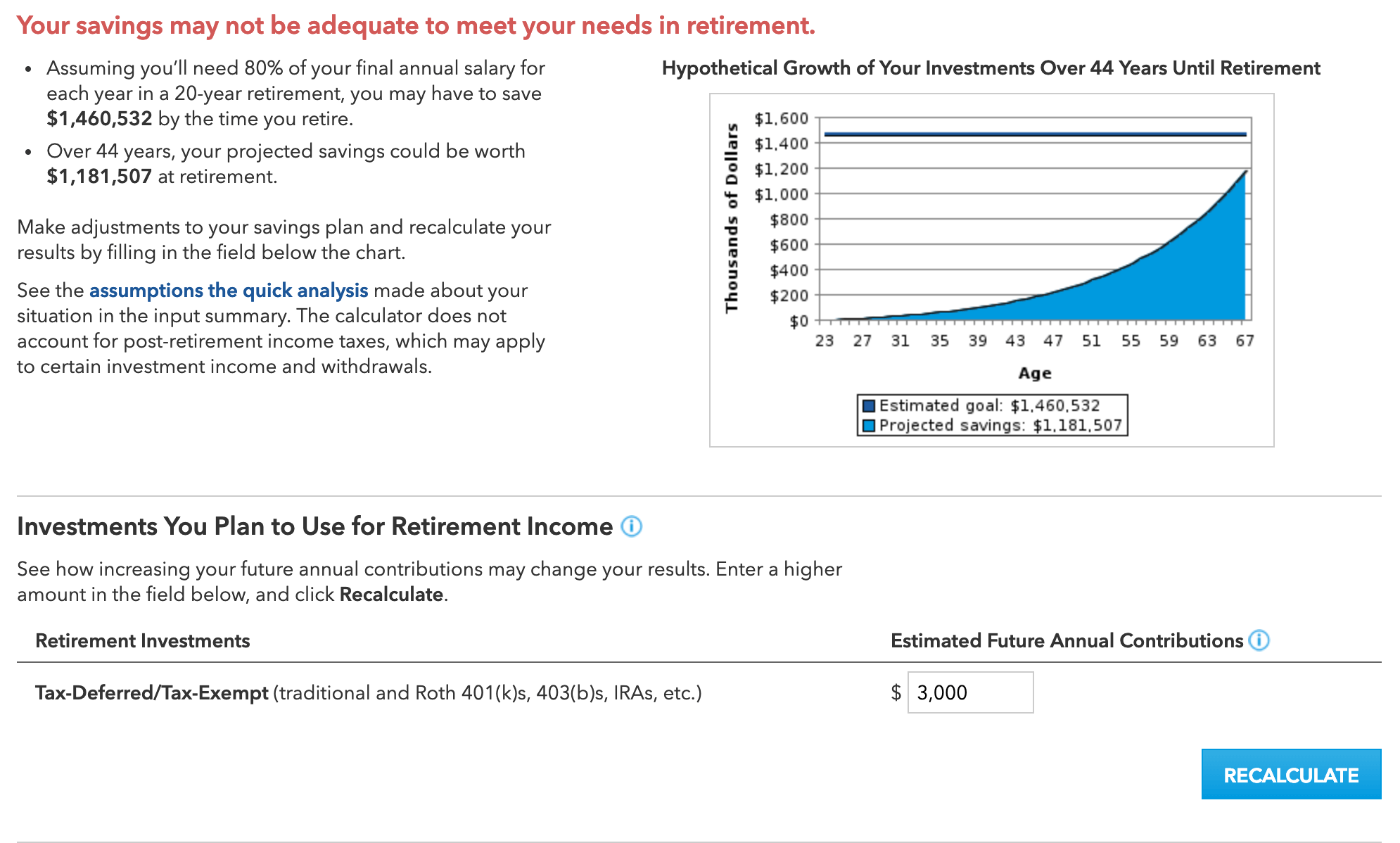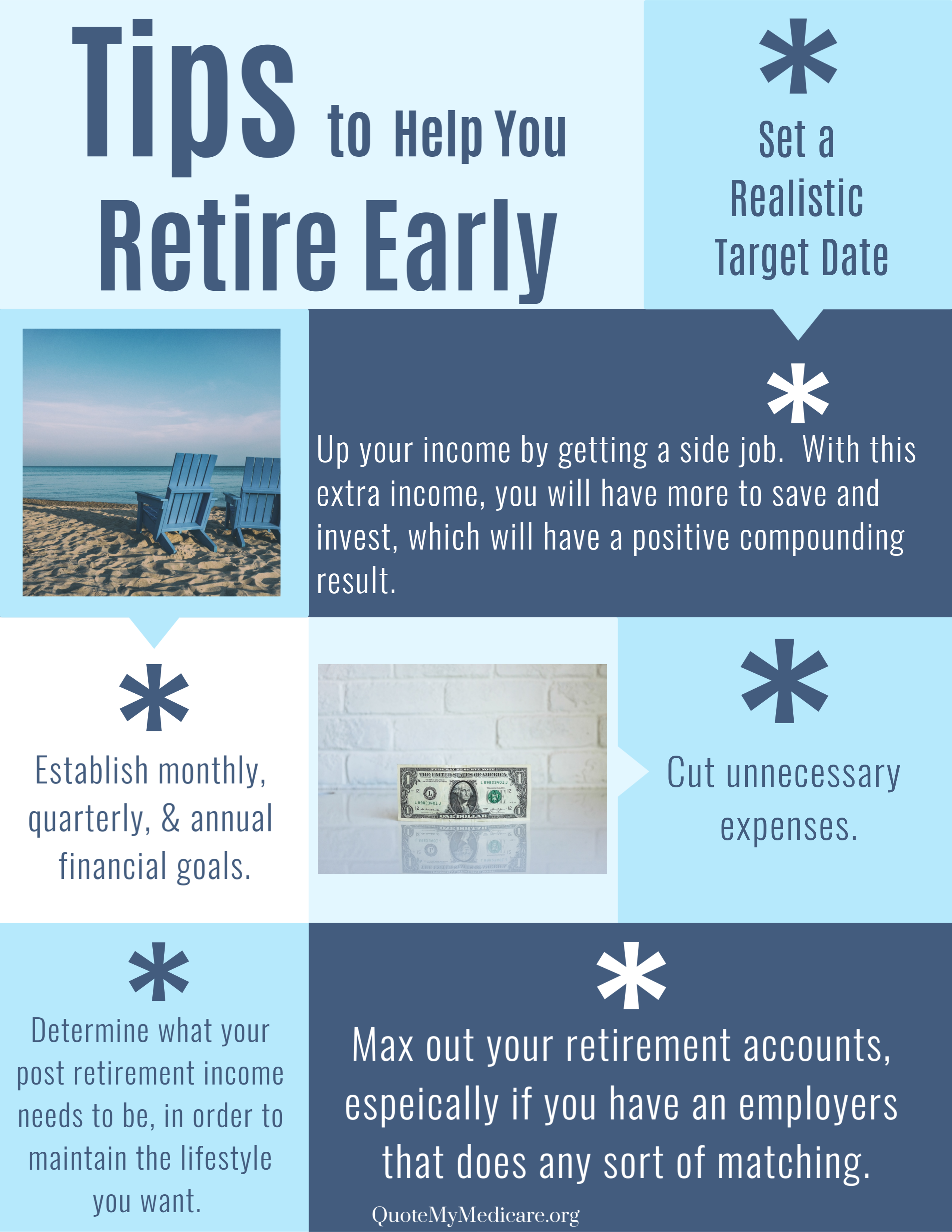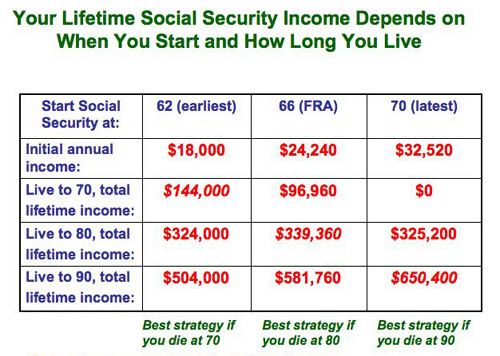Your How to calculate fers retirement example images are ready in this website. How to calculate fers retirement example are a topic that is being searched for and liked by netizens now. You can Get the How to calculate fers retirement example files here. Get all free photos.
If you’re looking for how to calculate fers retirement example images information linked to the how to calculate fers retirement example keyword, you have come to the ideal blog. Our site always provides you with hints for refferencing the highest quality video and picture content, please kindly surf and find more informative video articles and images that fit your interests.
How To Calculate Fers Retirement Example. Your multiplier is the easy part of the equation. The formula is slightly different if you elect to take the annuity at age 62 versus prior to turning 62. If you elect to retire prior to age 62, the pension calculation does not change to the higher multiplier of 1.1% when you turn age 62. Your multiplier will be 1% unless you retire at age 62 or older with at least 20 years of service, at which point your multiplier would be 1.1% (a 10% raise!).
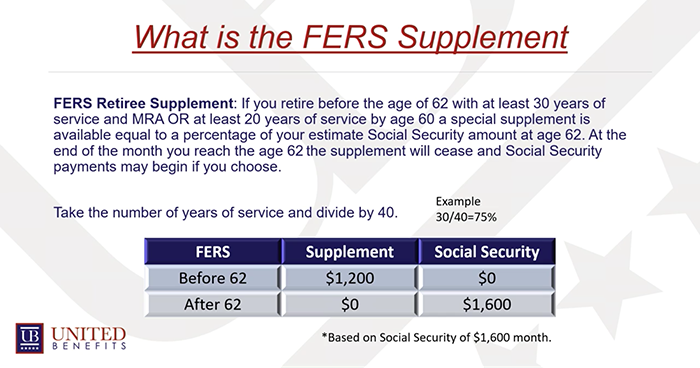 What is the FERS Annuity Supplement? United Benefits From unitedbenefits.com
What is the FERS Annuity Supplement? United Benefits From unitedbenefits.com
Let’s say bob has been a federal employee his entire career. Let’s run through a few examples of using the fers retirement calculator steps above to calculate your retirement benefits. If you elect to retire prior to age 62, the pension calculation does not change to the higher multiplier of 1.1% when you turn age 62. Multiplier of 1% versus 1.1%. The formula is slightly different if you elect to take the annuity at age 62 versus prior to turning 62. Your multiplier will be 1% unless you retire at age 62 or older with at least 20 years of service, at which point your multiplier would be 1.1% (a 10% raise!).
Your multiplier is the easy part of the equation.
This bump in pension is often the incentive that many feds need to work just a bit longer. Let’s say bob has been a federal employee his entire career. The formula is slightly different if you elect to take the annuity at age 62 versus prior to turning 62. If you elect to retire prior to age 62, the pension calculation does not change to the higher multiplier of 1.1% when you turn age 62. This bump in pension is often the incentive that many feds need to work just a bit longer. Your multiplier is the easy part of the equation.
 Source: retireinstitute.com
Source: retireinstitute.com
The formula is slightly different if you elect to take the annuity at age 62 versus prior to turning 62. Your multiplier is the easy part of the equation. If you elect to retire prior to age 62, the pension calculation does not change to the higher multiplier of 1.1% when you turn age 62. This bump in pension is often the incentive that many feds need to work just a bit longer. Let’s run through a few examples of using the fers retirement calculator steps above to calculate your retirement benefits.
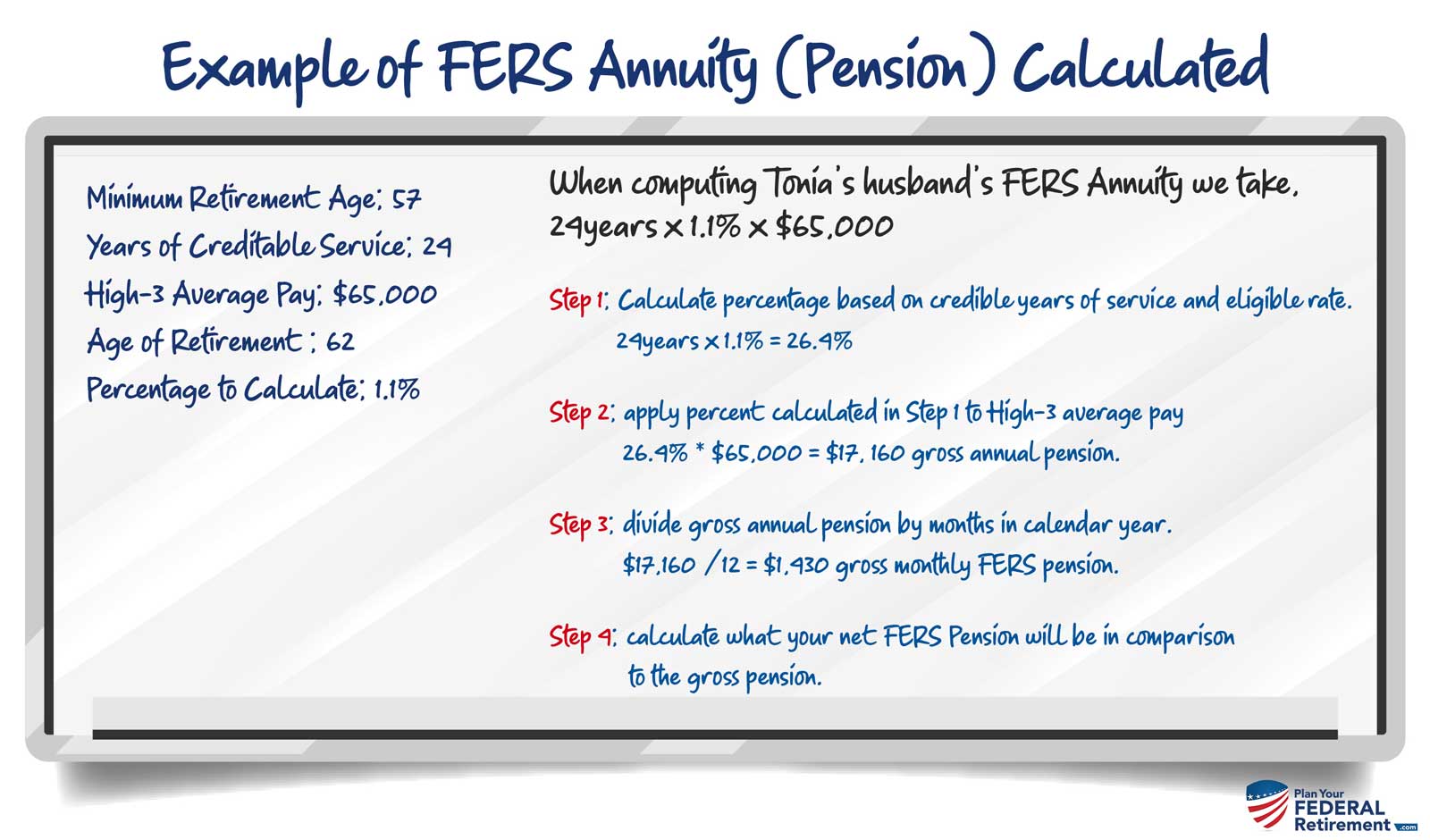 Source: plan-your-federal-retirement.com
Source: plan-your-federal-retirement.com
Let’s say bob has been a federal employee his entire career. Your multiplier is the easy part of the equation. Let’s run through a few examples of using the fers retirement calculator steps above to calculate your retirement benefits. Your multiplier will be 1% unless you retire at age 62 or older with at least 20 years of service, at which point your multiplier would be 1.1% (a 10% raise!). The formula is slightly different if you elect to take the annuity at age 62 versus prior to turning 62.
 Source: plan-your-federal-retirement.com
Source: plan-your-federal-retirement.com
Your multiplier is the easy part of the equation. This bump in pension is often the incentive that many feds need to work just a bit longer. Multiplier of 1% versus 1.1%. Your multiplier will be 1% unless you retire at age 62 or older with at least 20 years of service, at which point your multiplier would be 1.1% (a 10% raise!). Let’s run through a few examples of using the fers retirement calculator steps above to calculate your retirement benefits.
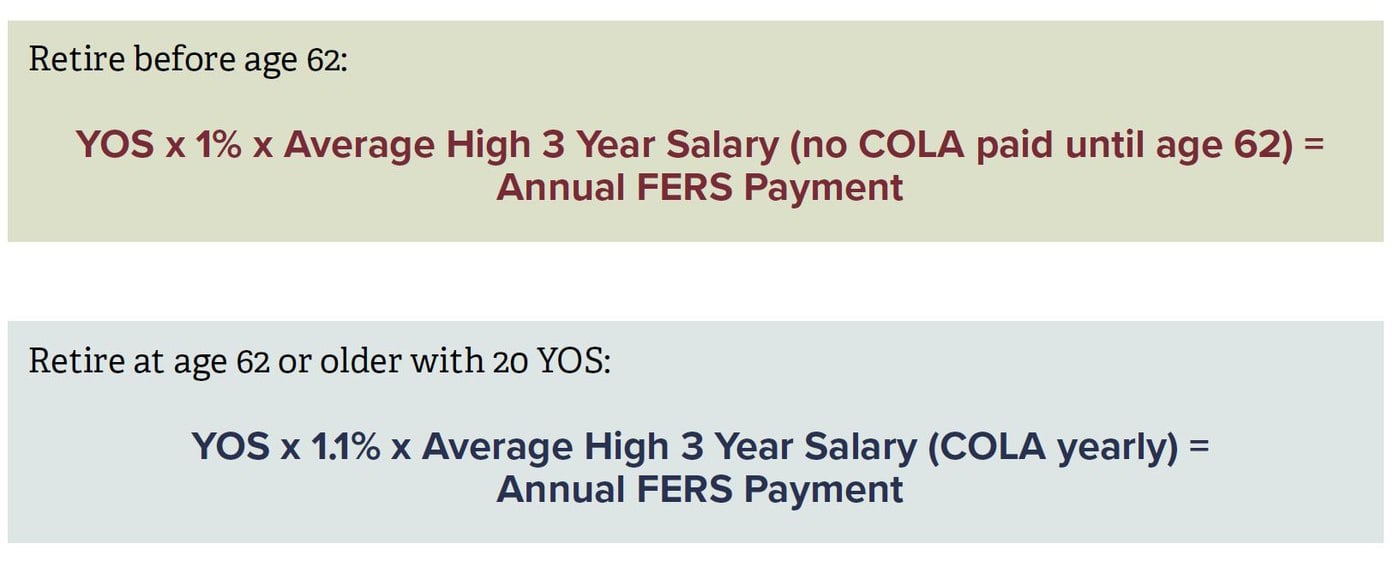 Source: blog.acadviser.com
Your multiplier is the easy part of the equation. If you elect to retire prior to age 62, the pension calculation does not change to the higher multiplier of 1.1% when you turn age 62. Multiplier of 1% versus 1.1%. Your multiplier is the easy part of the equation. Let’s run through a few examples of using the fers retirement calculator steps above to calculate your retirement benefits.
 Source: retireinstitute.com
Source: retireinstitute.com
The formula is slightly different if you elect to take the annuity at age 62 versus prior to turning 62. Let’s say bob has been a federal employee his entire career. Your multiplier will be 1% unless you retire at age 62 or older with at least 20 years of service, at which point your multiplier would be 1.1% (a 10% raise!). Multiplier of 1% versus 1.1%. The formula is slightly different if you elect to take the annuity at age 62 versus prior to turning 62.
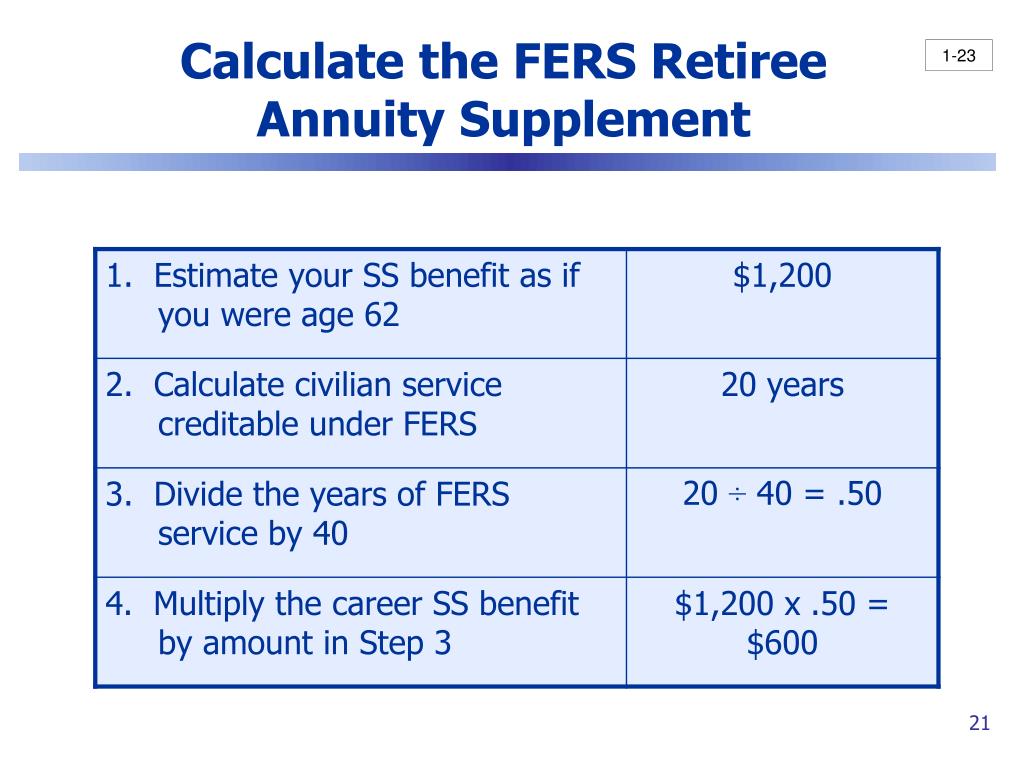 Source: slideserve.com
Source: slideserve.com
This bump in pension is often the incentive that many feds need to work just a bit longer. Let’s say bob has been a federal employee his entire career. Your multiplier will be 1% unless you retire at age 62 or older with at least 20 years of service, at which point your multiplier would be 1.1% (a 10% raise!). Let’s run through a few examples of using the fers retirement calculator steps above to calculate your retirement benefits. Your multiplier is the easy part of the equation.
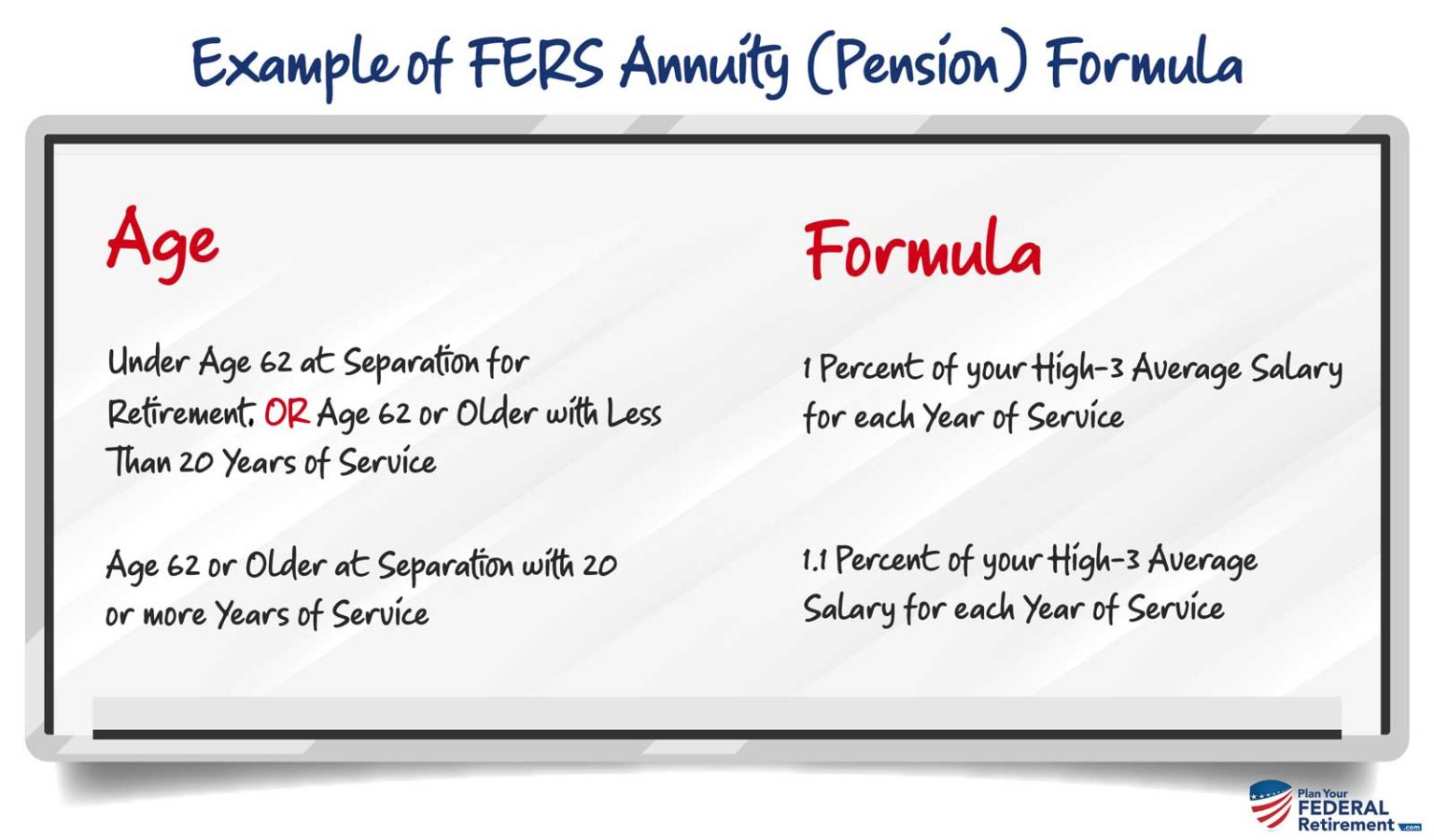 Source: plan-your-federal-retirement.com
Source: plan-your-federal-retirement.com
Let’s run through a few examples of using the fers retirement calculator steps above to calculate your retirement benefits. Your multiplier is the easy part of the equation. If you elect to retire prior to age 62, the pension calculation does not change to the higher multiplier of 1.1% when you turn age 62. This bump in pension is often the incentive that many feds need to work just a bit longer. Let’s run through a few examples of using the fers retirement calculator steps above to calculate your retirement benefits.
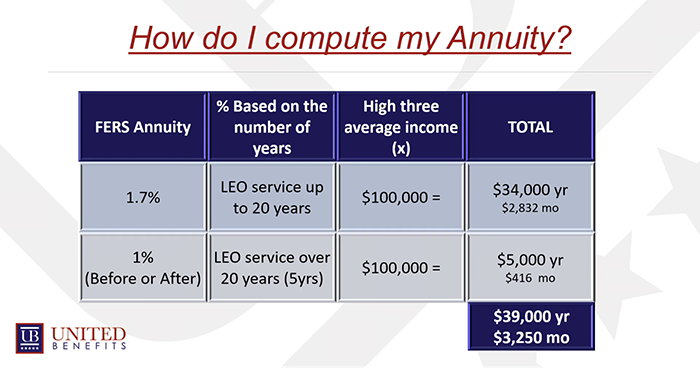 Source: unitedbenefits.com
Source: unitedbenefits.com
If you elect to retire prior to age 62, the pension calculation does not change to the higher multiplier of 1.1% when you turn age 62. This bump in pension is often the incentive that many feds need to work just a bit longer. The formula is slightly different if you elect to take the annuity at age 62 versus prior to turning 62. Your multiplier will be 1% unless you retire at age 62 or older with at least 20 years of service, at which point your multiplier would be 1.1% (a 10% raise!). Let’s say bob has been a federal employee his entire career.
 Source: yourfinancialpharmacist.com
Source: yourfinancialpharmacist.com
Your multiplier will be 1% unless you retire at age 62 or older with at least 20 years of service, at which point your multiplier would be 1.1% (a 10% raise!). If you elect to retire prior to age 62, the pension calculation does not change to the higher multiplier of 1.1% when you turn age 62. Multiplier of 1% versus 1.1%. Your multiplier will be 1% unless you retire at age 62 or older with at least 20 years of service, at which point your multiplier would be 1.1% (a 10% raise!). Let’s run through a few examples of using the fers retirement calculator steps above to calculate your retirement benefits.
 Source: slideserve.com
Source: slideserve.com
Let’s run through a few examples of using the fers retirement calculator steps above to calculate your retirement benefits. Multiplier of 1% versus 1.1%. This bump in pension is often the incentive that many feds need to work just a bit longer. The formula is slightly different if you elect to take the annuity at age 62 versus prior to turning 62. Your multiplier will be 1% unless you retire at age 62 or older with at least 20 years of service, at which point your multiplier would be 1.1% (a 10% raise!).
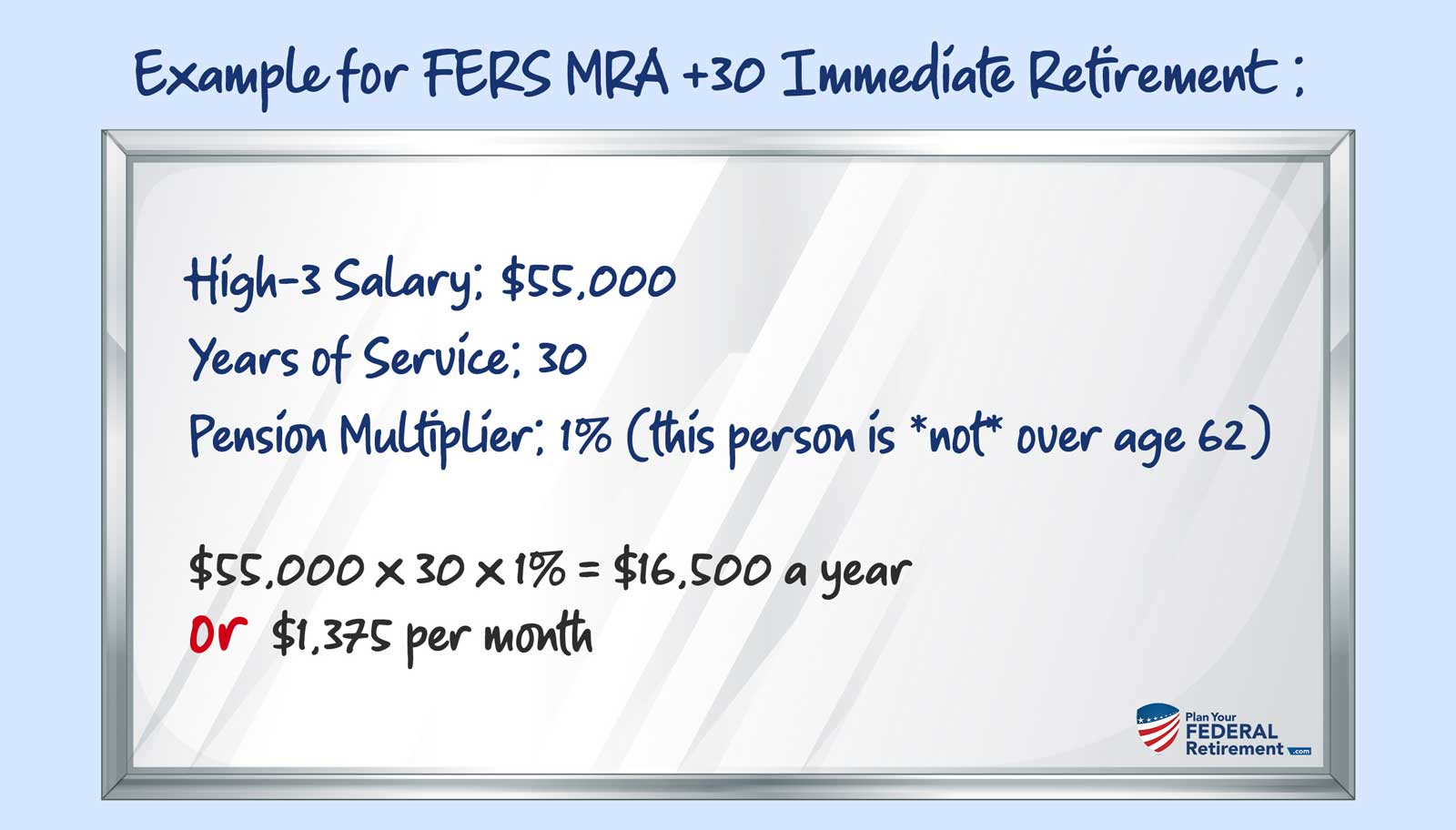 Source: plan-your-federal-retirement.com
Source: plan-your-federal-retirement.com
Your multiplier will be 1% unless you retire at age 62 or older with at least 20 years of service, at which point your multiplier would be 1.1% (a 10% raise!). Let’s run through a few examples of using the fers retirement calculator steps above to calculate your retirement benefits. This bump in pension is often the incentive that many feds need to work just a bit longer. If you elect to retire prior to age 62, the pension calculation does not change to the higher multiplier of 1.1% when you turn age 62. Your multiplier will be 1% unless you retire at age 62 or older with at least 20 years of service, at which point your multiplier would be 1.1% (a 10% raise!).
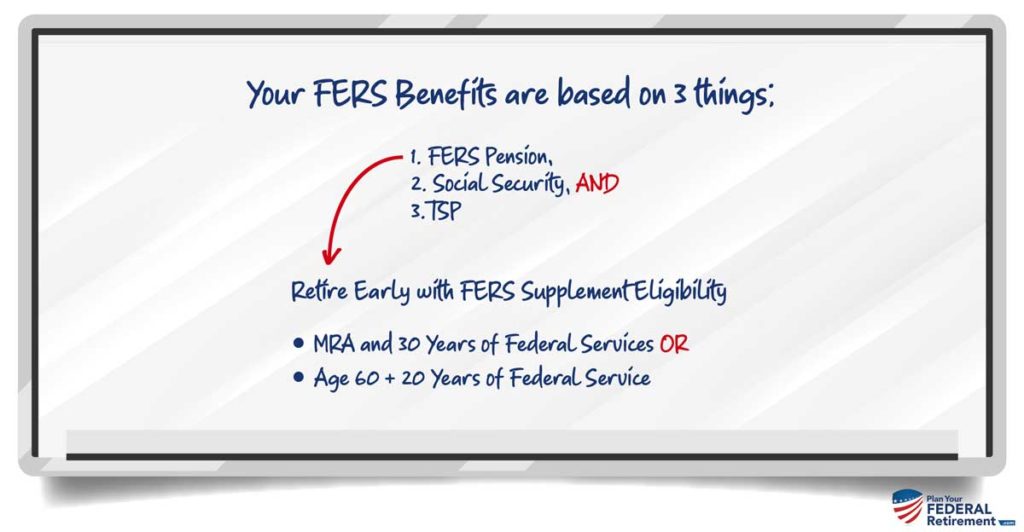 Source: plan-your-federal-retirement.com
Source: plan-your-federal-retirement.com
Your multiplier is the easy part of the equation. Your multiplier is the easy part of the equation. Your multiplier will be 1% unless you retire at age 62 or older with at least 20 years of service, at which point your multiplier would be 1.1% (a 10% raise!). If you elect to retire prior to age 62, the pension calculation does not change to the higher multiplier of 1.1% when you turn age 62. The formula is slightly different if you elect to take the annuity at age 62 versus prior to turning 62.
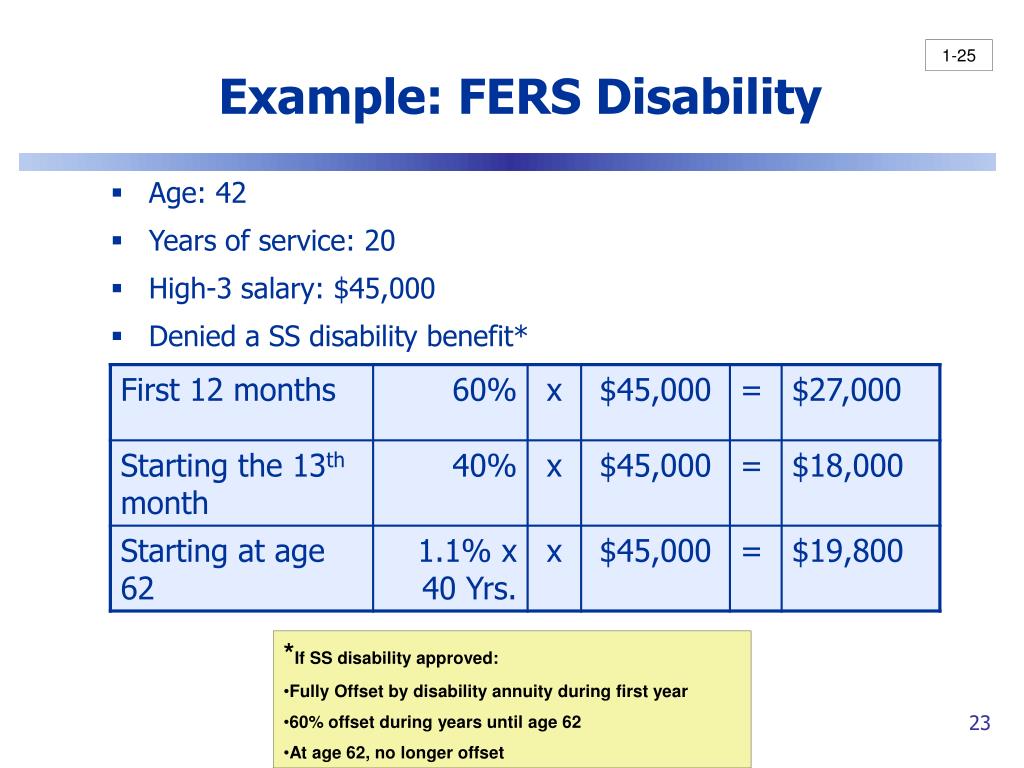 Source: slideserve.com
Source: slideserve.com
Your multiplier will be 1% unless you retire at age 62 or older with at least 20 years of service, at which point your multiplier would be 1.1% (a 10% raise!). Your multiplier is the easy part of the equation. Let’s say bob has been a federal employee his entire career. Multiplier of 1% versus 1.1%. Let’s run through a few examples of using the fers retirement calculator steps above to calculate your retirement benefits.
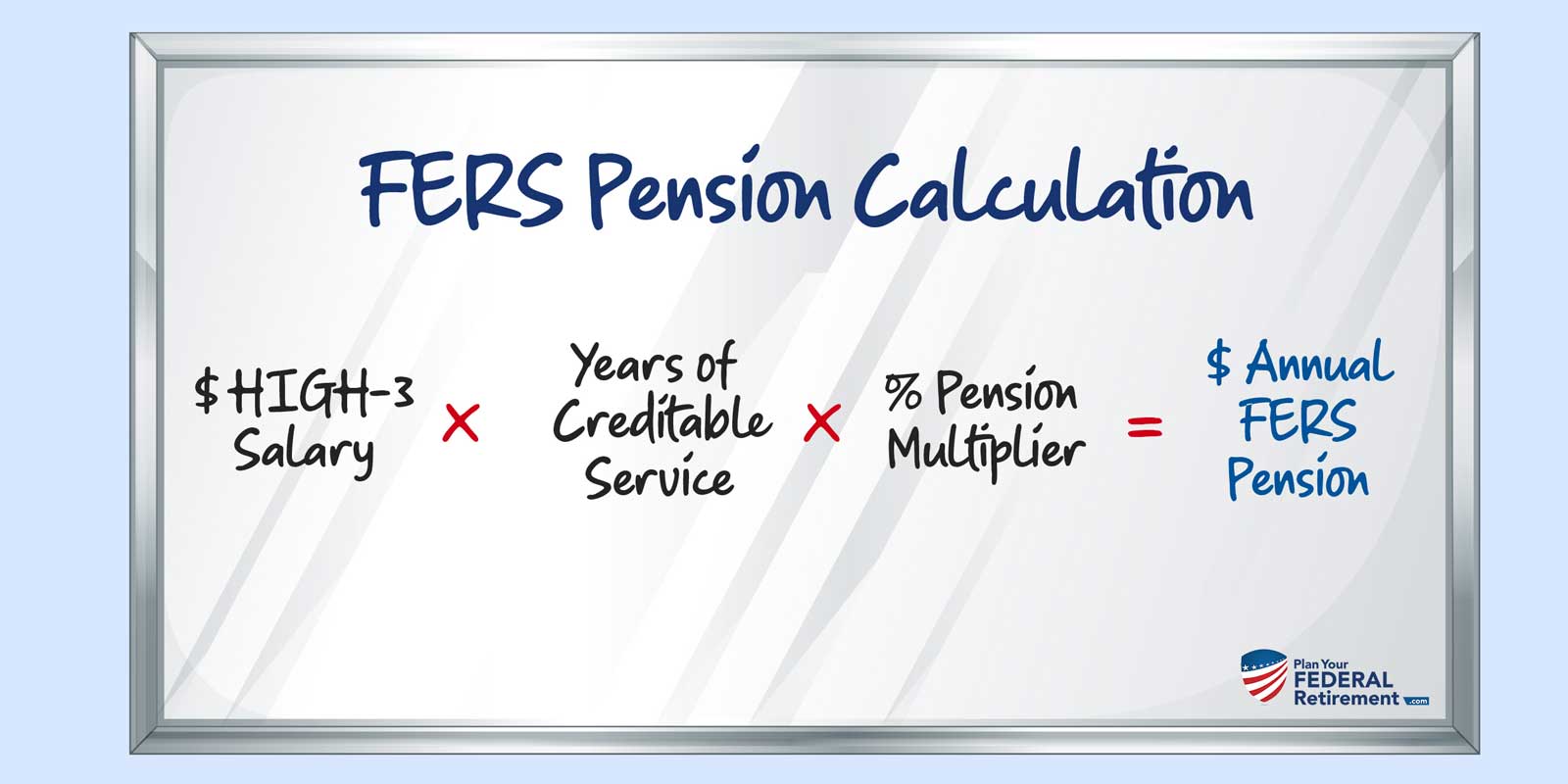 Source: plan-your-federal-retirement.com
Source: plan-your-federal-retirement.com
Let’s run through a few examples of using the fers retirement calculator steps above to calculate your retirement benefits. Let’s say bob has been a federal employee his entire career. Your multiplier is the easy part of the equation. Let’s run through a few examples of using the fers retirement calculator steps above to calculate your retirement benefits. This bump in pension is often the incentive that many feds need to work just a bit longer.
 Source: slideserve.com
Source: slideserve.com
Multiplier of 1% versus 1.1%. Your multiplier is the easy part of the equation. If you elect to retire prior to age 62, the pension calculation does not change to the higher multiplier of 1.1% when you turn age 62. Multiplier of 1% versus 1.1%. Your multiplier will be 1% unless you retire at age 62 or older with at least 20 years of service, at which point your multiplier would be 1.1% (a 10% raise!).
 Source: unitedbenefits.com
Source: unitedbenefits.com
This bump in pension is often the incentive that many feds need to work just a bit longer. The formula is slightly different if you elect to take the annuity at age 62 versus prior to turning 62. This bump in pension is often the incentive that many feds need to work just a bit longer. If you elect to retire prior to age 62, the pension calculation does not change to the higher multiplier of 1.1% when you turn age 62. Your multiplier is the easy part of the equation.
 Source: present5.com
Source: present5.com
Let’s say bob has been a federal employee his entire career. Your multiplier is the easy part of the equation. Let’s say bob has been a federal employee his entire career. Your multiplier will be 1% unless you retire at age 62 or older with at least 20 years of service, at which point your multiplier would be 1.1% (a 10% raise!). Multiplier of 1% versus 1.1%.
 Source: planyourfederalbenefits.com
Source: planyourfederalbenefits.com
Your multiplier will be 1% unless you retire at age 62 or older with at least 20 years of service, at which point your multiplier would be 1.1% (a 10% raise!). The formula is slightly different if you elect to take the annuity at age 62 versus prior to turning 62. Your multiplier is the easy part of the equation. Your multiplier will be 1% unless you retire at age 62 or older with at least 20 years of service, at which point your multiplier would be 1.1% (a 10% raise!). Multiplier of 1% versus 1.1%.
This site is an open community for users to do submittion their favorite wallpapers on the internet, all images or pictures in this website are for personal wallpaper use only, it is stricly prohibited to use this wallpaper for commercial purposes, if you are the author and find this image is shared without your permission, please kindly raise a DMCA report to Us.
If you find this site adventageous, please support us by sharing this posts to your favorite social media accounts like Facebook, Instagram and so on or you can also save this blog page with the title how to calculate fers retirement example by using Ctrl + D for devices a laptop with a Windows operating system or Command + D for laptops with an Apple operating system. If you use a smartphone, you can also use the drawer menu of the browser you are using. Whether it’s a Windows, Mac, iOS or Android operating system, you will still be able to bookmark this website.


